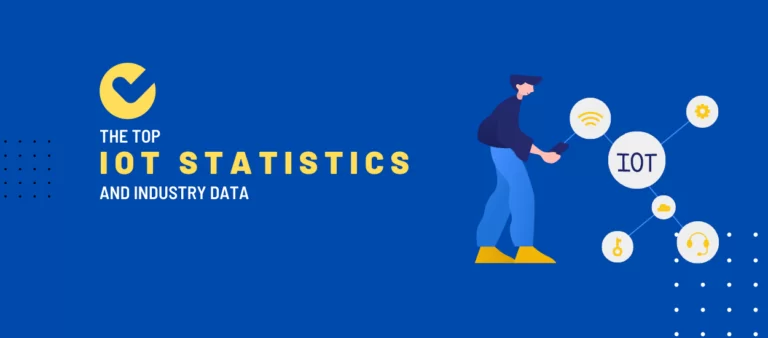Here’s a detailed, well-researched list of the top webinar statistics you should know about. This factual list will help all types of marketers and online promoters in making the most out of their resources, investments, and efforts.
Webinar is one of the few things that saw itself rising in the global IT market in the last few years. Webinars empower promoters and marketers to connect to a number of different clients and prospects with a lot of ease.
It also enables you to organize big and extensive online meetings and train new staff members and, at the end of the day, adds a great amount of value to your users.
This list of the webinar statistics will help you in making a wise decision in deciding the perfect day for a webinar, the best time for sending invitations, metrics for promotion, a niche that fetches the most members, and a lot more.
Before just jumping to the list, let’s take a recap of what a webinar is and what it means for your business.
Webinar: A Brief Introduction You Should Know About
The dictionaries and online resources define a webinar, or a web seminar, as an online live presentation for educational purposes that allows the attendees to submit queries and comments to the presenter.
For people who are wondering “What exactly is a seminar?” Here is the answer: A seminar is a meeting of people to discuss and share information.
Long story short, webinars are live online events, where the word “event” can mean a video presentation, educational or promotional workshop, a seminar, online training session, or a full-fledged online classroom lecture that is hosted and delivered online using different kinds of webinar apps and software.
One of the key things making webinars effective is that most of the webinars are a two-way function, allowing all of the attendees and the hosts to share information in real-time without any delay, ticket submission, and any kind of roadblock.
It is important to note here that webinars are different from “Webcast”. What we call a “Webcast” is a pre-recorded video session or presentation that is later broadcasted online (or on TV or video platforms like YouTube), whereas webinars are fully live sessions that allow real-time interactivity between the hosts and the attendees.
For example, a webinar on content marketing teaches business owners, promoters, and marketers to drive business growth without breaking the bank at all.
In case you don’t have a lot of experience with live webinars yet, one of the best ways to familiarize yourself with them is to attend as many webinars as possible.
So now that we know what exactly a webinar is, let’s begin with the stats.
Also, don’t miss our article about the best Webinar platforms.
Webinar Stats Selected by Editor
- 11 AM is the best time for a webinar
- Over 70% webinars boost sales
- Tuesdays are best for webinars
Here are the top webinar statistics you should know about and consider if you want to add webinars to your online marketing strategy or want to host a successful webinar.
01. 70% of All Webinars Are Conducted Only to Boost Their Sales.
Most of the webinars hosted these days are all about boosting engagement. Webinars in modern times are delivering some of the highest engagement opportunities for all kinds of brands out there.
One of the prime reasons for hosting webinars is sales and engagement enhancement. Studies across the globe also show that various add-ons like question and answer sessions, various kinds of audience polls, and surveys are some of the most effective tools for enhancing participation between hosts and webinar attendees.
These add-on tools allow attendees to stay in the webinar for a longer period, increase their interest, and help all of the attendees in staying highly focused on the content and motivation of the webinar.
02. Questions and Answer Sessions Are Implemented in Over 81% of All Webinars.
One of the modern foundations of all kinds and niche of live webinars across the globe is the Q and A session. Also known as Question-Answer round, Q&A is implemented at the end of a live webinar.
The number of Q&A sessions has reached a whopping 81%. And that’s not all, another interesting thing about Q&A sessions is that 92% of all attendees expect a live question and answer session at the end of a live webinar.
One of the most important factors for the success of webinars across different niches is that it facilitates a fun environment for the attendees to interact with the hosts.
It might also interest you that out of all the webinars, around 69% of all webinars provide downloadable online resources to keep their attendees interested and engaged with the content of the live webinar.
As mentioned above, surveys, various kinds of audience polls, and multimedia content are regarded as an important engagement tool.
03. Tuesday Is Considered the Best Day for Sending Registration Emails.
As per a recent study, Tuesday is considered to be the best day for sending out the invitation and registration emails to the possible attendees, irrespective of your niche, kind, and type of audience. Emails sent on Tuesday have registered the highest number of conversions for a while now.
Other important days for doing the same are Wednesday and Thursday. All in all, mid-week is considered the best time to send out invitations, booking, and registration emails for live webinars.
04. What’s the Ideal Duration limit for a Live Webinar? It’s 60 Minutes!
No one in the world expected that long-form content and especially long-form video content would ever make it big, but it did! One of the reasons for the success of long and lengthy live seminars is that live webinars attract a large amount of influential and loyal audiences.
The time and video length restrictions established on various social media platforms have also catalyzed this expansion. Studies are showing that over 55% of all live webinars hosted on platforms such as WorkCast are over and around 60 minutes in length.
A notable factor here is that most 60-minute content and live webinars mostly are developed of 40-45 minutes of the real, core content, followed by-polls, surveys, and live Q/As with the host of the webinar.
This is one of the core formats that is being used in all niches and types of webinars across the global market. This format has helped a lot of webinars in keeping their audiences engaged while eliminating the chances for early drop-off from the webinar.
05. Best Day to Schedule a Webinar? Also Tuesday!
This is absolutely amazing to know that the webinars held on Tuesdays are 97% more successful than the ones held on other days. The number of this statistic is rising with the success rate at almost 100 times better than those during weekends, irrespective of the kind and type of the webinar.
Webinars held on Tuesday are attended by a guaranteed 97% more attendees than on other days. One of the many different reasons for this is that people always want a ton of time to plan around and strategize their processes for the webinars.
Also, out of all the weekdays, Monday and Friday are considered to be the busiest of them all, which makes all the sense in the world to avoid them for scheduling your webinars. Making things easier for the attendees has to be your core strategy as a host.
06. Webinars Are Becoming More and More Mobile Friendly.
According to a recent study, an average American spends 2 hours and 55 minutes with their eyes stuck on their smartphone screens, each day. That would make a 1000 hours spent staring at a glass screen each year.
This fact is quite evident to state that 25% of all webinar attendees watch live webinars on their mobile phone screens. The takeaway here for marketers? Make your seminars mobile friendly!
07. Training and Communication Oriented Workshops Get 66% More Attendees.
Add the concept of training and communication into your workshops to get the highest number of loyal attendees on your live webinars. Other genres like marketing get only 36.6% of attendees out of all.
Other categories like on-boarding and customer-based webinars receive 42% of attendees ( registrant to attendee rate).
08. 11 AM is the Best Time for Webinar.
To maximize participation, it is important for businesses to conduct the webinars at the right time. Study shows that 11 AM is the best time for the webinars.
Over 40% of all webinars are conducted during the time between 10 AM to 12 PM.
09. Webinars Duration Should be Between 30-40 Mins Long.
As per research conducted by BigMaker, the majority of webinar participants prefer sessions that last around 40 mins. When webinar participants were asked about the duration, the majority of the participants said — 30 mins is the sweet spot duration of a webinar. Few percent of the participants said they need an hour-long webinar.
So if you’re looking to create and host a webinar, we would suggest you make it last around 30-40 minutes long as it’s the sweet spot duration for hosting a webinar. Also keep one thing in mind, in the morning between 10-11 AM is the best hours to make it live.
10. Most Webinar Users Have Windows OS.
As per the case study of MegaMeeting, it was concluded that 80% of users run a Windows operating system. Coming to the macOS and apple devices, around 15% were Mac users, 5% were iOS devices, and 2% are Android Devices.
Coming to web browsers, Microsoft is the preferred choice. Most of the time majority of the webinar attendees around 45% use Edge, Google Chrome is also being used by around 39%.
11. 41% of Webinar Attendees Pay Attention from start to finish.
A well-known Social Media Agency — Make Social Media Sell says — around 40% of the listeners pay attention from start to finish of a Webinar. And around 60% of the participants drop the webinar when it starts.
Well in order to make your participants engaged with Webinars make sure you provide value with the content of your cover. Try to use compelling featured images, catchy titles, leveraging introductions, add a call to action button, and overall provide value through the webinar you’re hosting.
12. One Webinar Helps You Get Upto 500 Leads.
Nowadays you can see, most businesses use Webinars to generate more leads. From fortune 500 companies to small business owners they leverage webinars to collect relevant leads.
More than 75% of (B2B) marketers concluded that webinars can help you get quality leads without any hassle. There are many B2B companies that are making use of Webinars as a lead generation tool.
B2B create and launched webinars around 61% when compared to B2C of 17% only. Also, around 11% of non-profit organizations make use of webinars. Overall, if you leverage webinars as lead generation tool, you can easily capture around 500 leads per webinar you create.
13. On Average 50% Audience Will Download The Slides.
As per a case study done by Adobe, around 50% of the participants downloads the presentation slides. While around 29% percentage of the attendees also download the product solution briefs.
Right after a seminar only 19% of the participants only attended to 5-10 minute breakout session. In order to make users stick to your webinar, provide them with proper slides and downloadable resources provide them with proper slides and downloadable resources.
14. Pharmaceutical Webinars Has More Attendees (Around 63%).
The pharmaceutical industry is booming and yes they are hosting more and more webinars compared to any othe industry. As per the case study of Livestorm, around 63% of webinars participants are from the Pharmaceutical industry.
Webinars in the pharmaceutical industry are mainly 25 minutes long on average, which is kind of a bit lower compared to other industries. Yes, webinars are also popular in other industries as well such as — consulting, SaaS, financial service, business, and other industries, etc.
15. Sending Webinar Promo On Mornings Only.
As per the survey conducted by GoToWebinar, it’s rare that people signup for a webinar. People only register for a webinar if they find out that webinar to be useful, and something work-related event is there.
When GoToWebinar conducted a campaign, they found out that — the best time to send Webinar promotional emails was between — 8 am and 12 pm. If you’re someone with a higher goal to score, you should aim for 9 AM which is considered as the happy hour for webinar registrations. When you send the webinar promotions you will have a chance of 14% more success rates.
16. The Average Attendees Viewing Time is 60 Minutes.
As per various research and case studies, webinars are long so most of the time, attendees drop offers in between. There are two different stats for live webinars and on-demand webinars.
When we talk about the live webinar, these are viewed around 55 minutes on average compared to other on-demand webinars viewed for around 42 minutes. The best part, webinars are still growing and getting traction among people. With the growing popularity of webinars, viewing time is also increasing.
Most of the time, live webinars are hosted to solve many problems of the attendees. What’s more, the live webinars are also recorded and then repurposed as per the needs and requirements.
17. Mostly the Communication Type of Webinar Has Higher Conversion.
It’s evident communication types of webinars mainly have a higher conversion rate of around 67.05%. Even the training webinars also have goog conversion rates and have a solid percentage of 44.79%, and the marketing webinars have conversions of around 39.10%.
Nowadays Education niche webinars are still growing and still it has the lowest conversion rates of around 30.79%. These stats and figures are as per the webinar conversion rates and goals.
18. Most Webinars Uses Question and Answers (Around 81% Webinars).
Webinar attendees love to have questions and answers in a webinar. It’s evident that question and answer are the foundation and it’s the engagement tool that can use used inside a webinar. More than 92% of the attendees expect a live question and answer session at the end of the session.
Well, questions and answers are ranked because it’s a more engaging and fun way for attendees to interact with the host. What’s more, 69% of webinars basically supply downloadable resources to engage with the attendees.
Other engagement metrics can be used inside webinars such as — surveys, polls, and media as a prime source of engagement tools.
19. 79% Of Webinar Data is Video Only.
Videos are the most digestible and popular source of content. For a webinar host or a participant to connect with a webinar, the average bandwidth should be at least 380kbps.
If you’re someone looking to host webinars make sure to provide high-quality video webinars. While hosting a video webinar you will be sharing most of the data in the video format only, make sure the content is engaging.
While recording or hosting a webinar, you should make sure the webinar video quality is top-notch and check the video bandwidth along with other aspects as well.
20. Half Of The Marketers Rely on Webinars for Promotion.
As per the research and case study of OptinMonster, more than 58% of marketers rely on webinars for promoting products/services.
Also, the case studies have shown, 2-5% of webinar attendees make a purchase at the end of the webinar. If you’re marketers who are looking for a robust way of promoting products/services, give webinars a try.
21. Most marketers see webinars as an essential tool.
Most marketers see webinars as a critical way to hold users’ attention and attract new potential customers.
Around 95% of the marketers believe that organizing webinars are worth their efforts, and they will continue to do it for brand-boosting and customer engagement. On a scale of 5, marketers rate webinars 3.08, significantly higher than several other marketing tactics.
22. Viewers rank on-demand viewing as the most helpful add-on to webinars.
Viewers rank on-demand viewing as the most helpful enhancement to webinars, followed by recording and live polls. Overall, viewers are overwhelmingly satisfied with what webinars offer, both in terms of content and experience.
The top three attributes that make webinars effective are good quality video streaming (90%), easy sharing capabilities (82%), and effective marketing communications (81%).
23. Around 89% of digital marketers believe webinars will outperform other channels.
Around 89% of digital marketers believe webinars will be one of the most important channels to outperform other marketing channels in 2022 and beyond.
Also, 66% of business leaders say their sales team prioritizes webinars when closing new business deals. In addition, 79% of business owners believe webinars directly influence their sales.
24. The use of webinars and virtual events has increased from 57% to 67%.
The percentage of marketers who used webinars and virtual events in their marketing mixes has increased from 57% to 67%.
However, according to the report, some of the challenges that marketers face when it comes to this tool are lack of skills (26%), limited time (19%), not knowing how to effectively use the technology (20%), and cost-related issues (29%).
25. Around 33% of marketers focus on using interactive tools while hosting webinars.
Over a third of marketers use interactive tools like polls and Q&A sessions when hosting webinars. In addition to these features, some of the other popular enhancements that marketers add to their webinars include visual aids (25%), customized landing pages (24%), and slideshows (23%).
26. Around 57% of digital marketers will organize and run 50 webinars a year.
57% of digital marketers will organize and run 50 webinars a year as part of their marketing activities. This number may seem significant, but it just represents the tip of the iceberg for this popular marketing tool.
In addition, reports show that over 70% of companies use webinars to communicate with customers regularly. With such high levels of engagement and effectiveness, there’s no doubt that webinars are one the essential marketing tools in today’s digital world.
27. Around 93% of webinar participants prefer desktop.
Webinar participants prefer to consume content on their desktop computers, followed by laptops (78%), mobile devices (53%), and tablets (17%). Additionally, around 85% of those who watch webinars regularly do so at work.
Given these preferences, it makes sense for marketers to create more engaging webinar content that can be consumed quickly on desktops.
28. It costs around $3,500 to $5,000 to organize a webinar.
Webinars cost around $3,500 to $5,000. Marketers usually incur these costs by purchasing webinar software or hosting services. In addition to these costs, other ongoing expenses like post-hosting support and marketing activities can significantly increase the total cost.
Despite this high cost, marketers continue to use webinars to increase brand awareness and grow their customer base.
29. Email is rated as the most effective webinar promotion tool.
And why wouldn’t it be? Emails are free and are a great way to promote any event, including webinars. Recent surveys show that solicitations through email account for 73% of webinar signups.
So, while you are at it, exploit the company website and blog since they could deliver you up to 14% of the registrations.
30. Sending a reminder a day before the webinar improves webinar attendance by 20%.
Sending a reminder email to registrants the day before the webinar improves attendance by 20%. Additionally, 62% of marketers said that sending multiple reminders is the best way to ensure high attendance.
Bottom Line
We hope this list of best webinar statistics you should know about covers all aspects of a perfect webinar setup. Analyzing these stats will surely help you in achieving the success you desire out of your live webinars.
Make sure you optimize your content and complete the webinar experience to be user-centric for long-time success. Your webinar has to be informative, unique, engaging, and mobile-friendly. It’s time to go live now!














